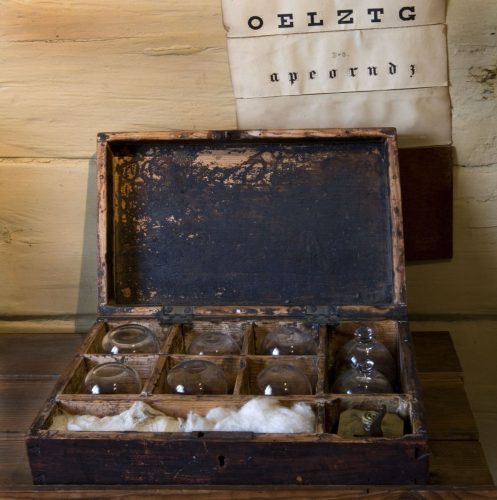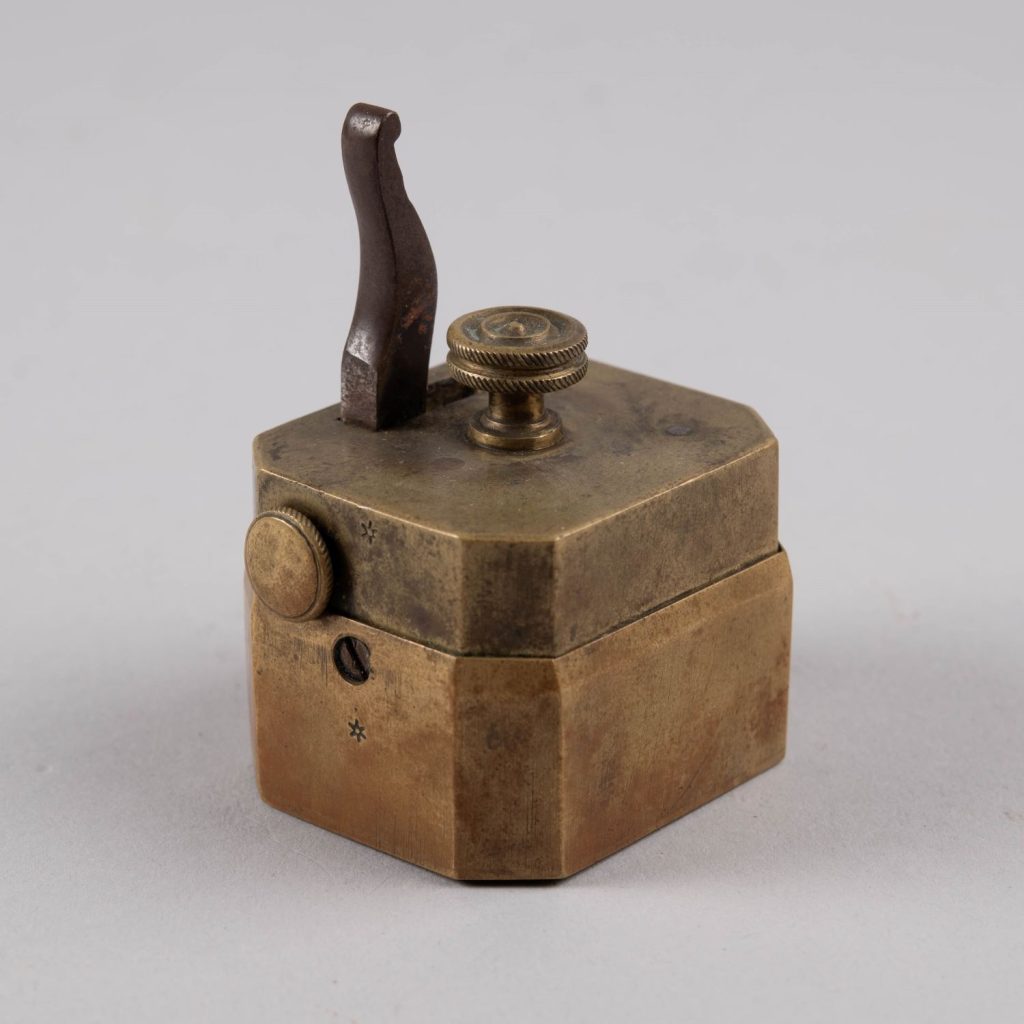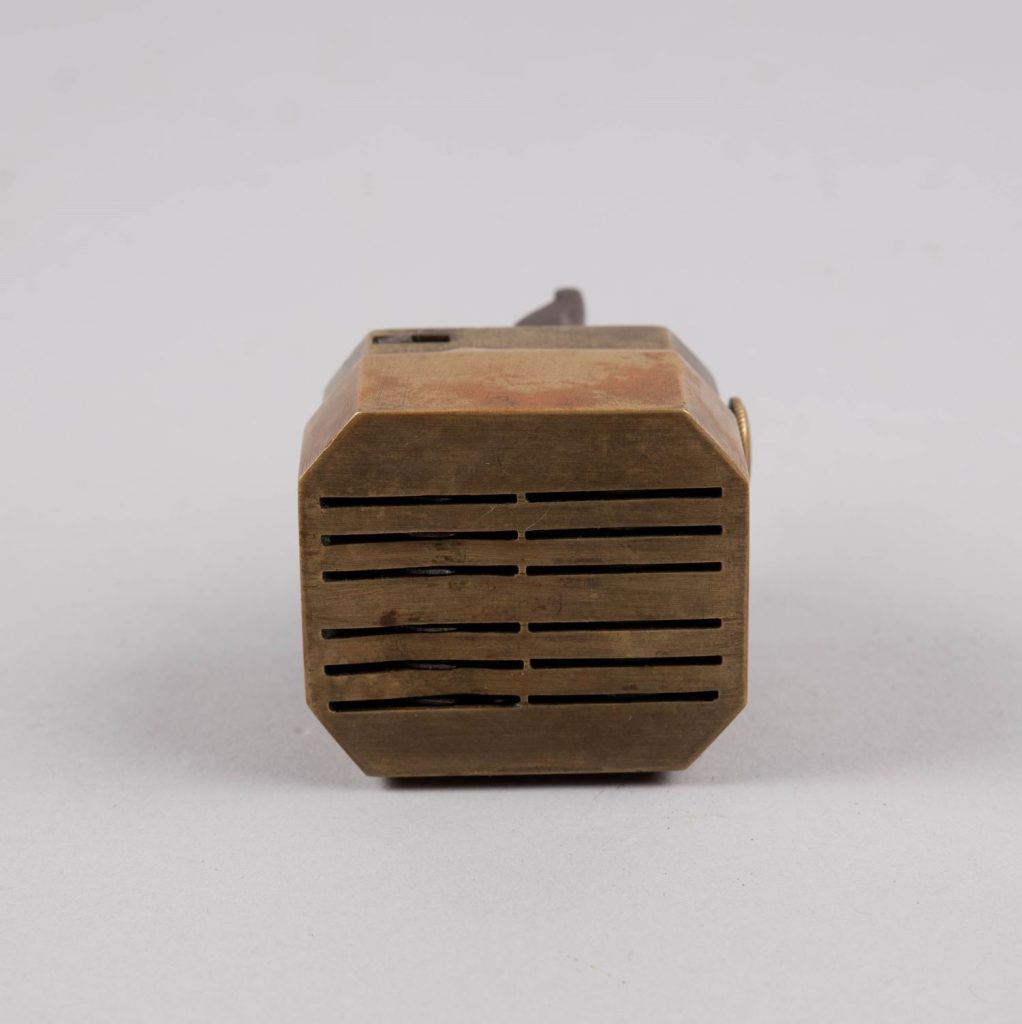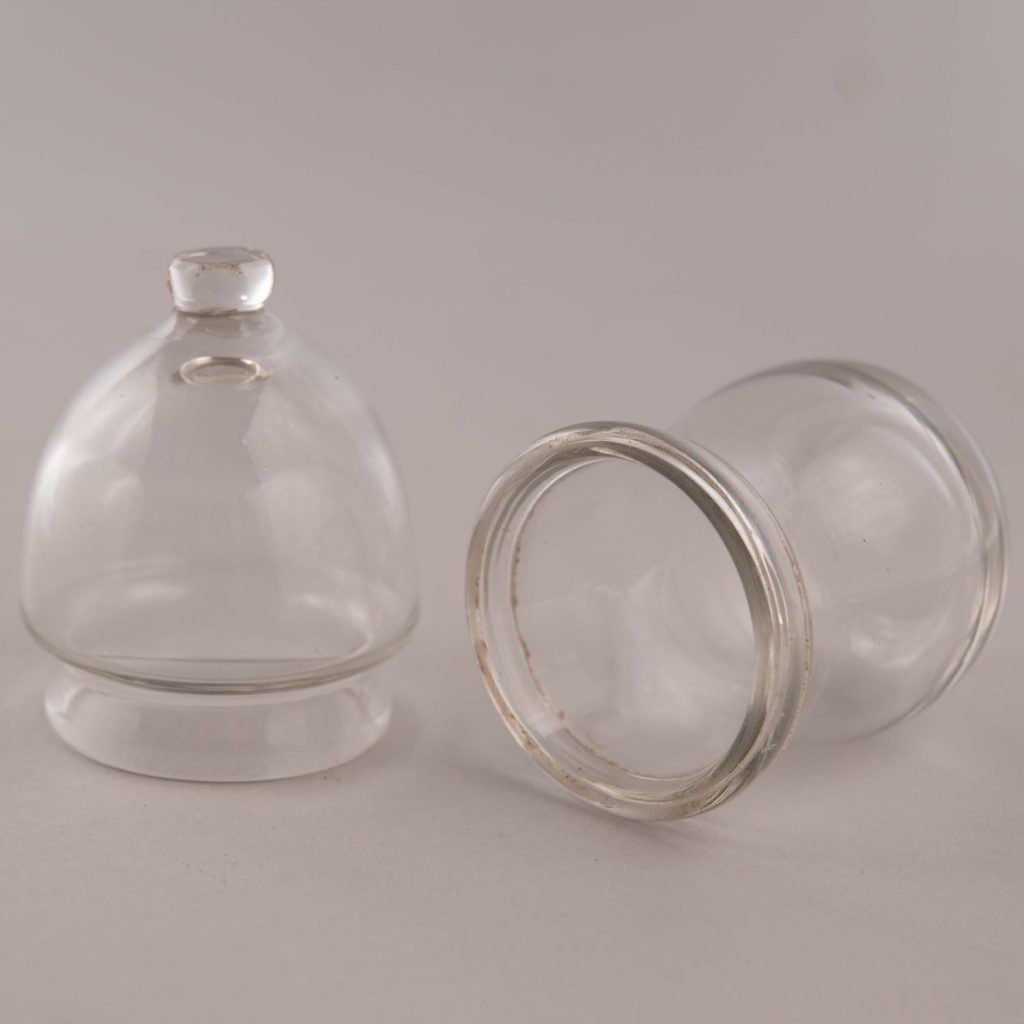Cupping set for bloodletting

In one of the small rooms at St. Jørgen’s Hospital, there is a cupping set, a wooden box with glass cups and what is known as a scarificator.
This was used to make small cuts in the skin, and the cups were then placed over the wounds to draw blood. We don’t know much about the origin of this item – maybe this box was used at St. Jørgen’s, or perhaps it was originally located elsewhere and was brought here in connection with an exhibition when the Leprosy Museum opened in 1970.
What we do know, however, is that cupping was carried out at St. Jørgen’s Hospital and at the two other leprosy hospitals in Bergen, but the practice declined over the course of the latter half of the 19th century. The sources that provide an account of this from St. Jørgen’s and Pleiestiftelsen state that this was something the sick themselves requested, and not something the doctors recommended. They had grown up believing in the effect of removing excess blood, and claimed that they felt better after such treatment.
City physician Ole Bornemann Heiberg writes about this from St. Jørgen’s Hospital in 1843: ‘Bloodletting is coincidentally widely used by the sick, and is the remedy they prefer to use, as it offers such immediate relief from their various ailments’.



Photos: Bergen City Museum.



